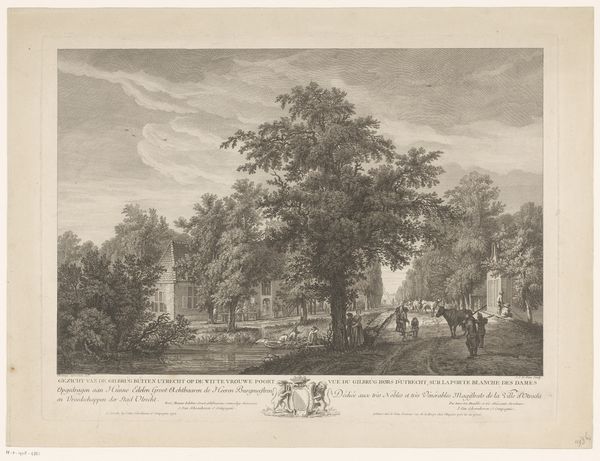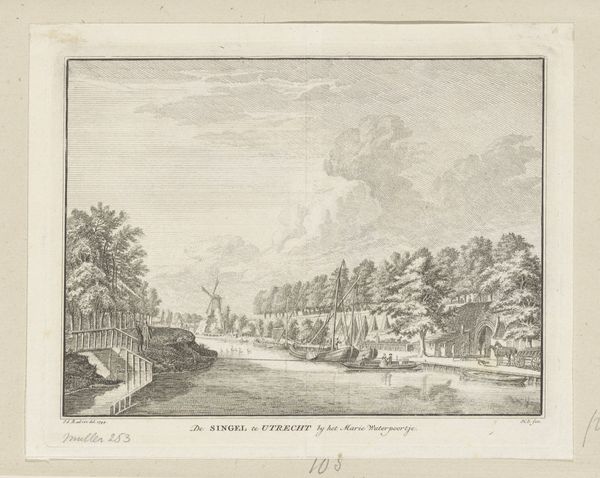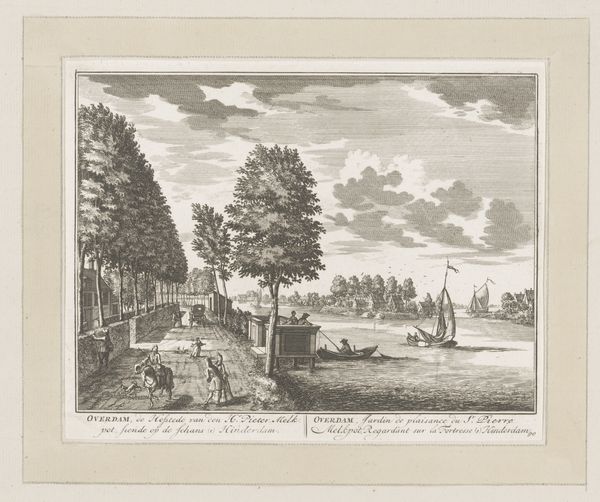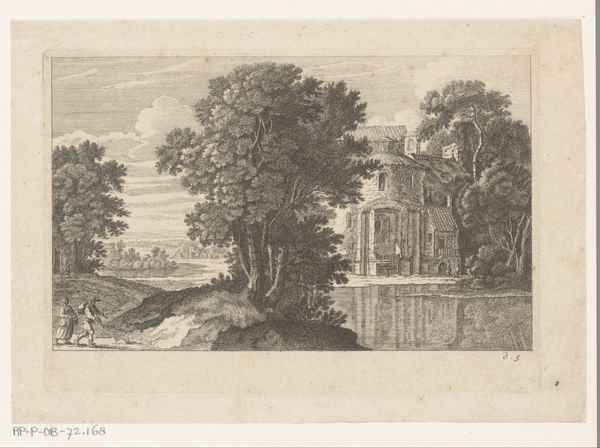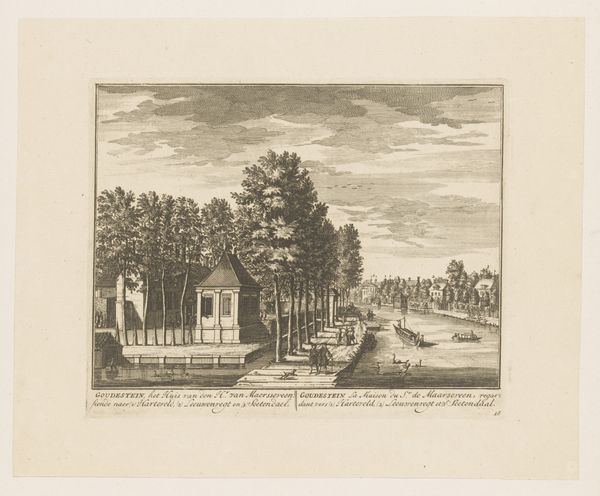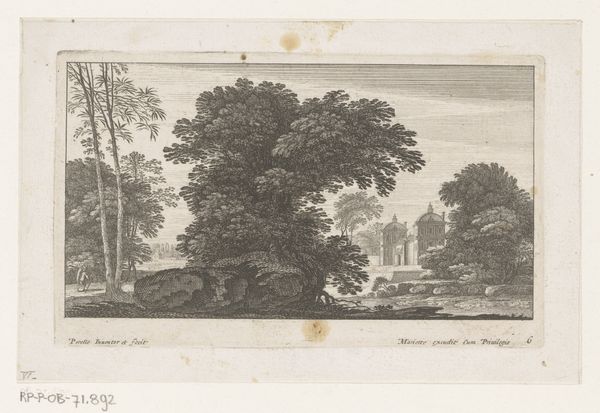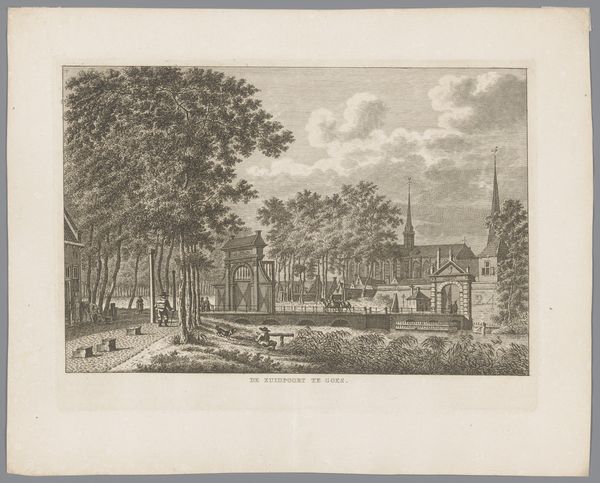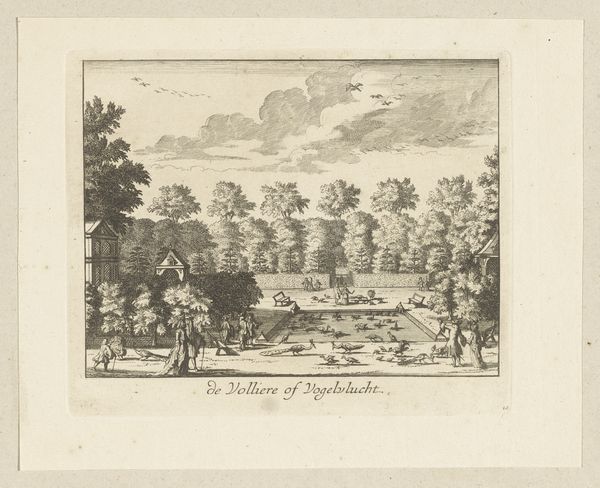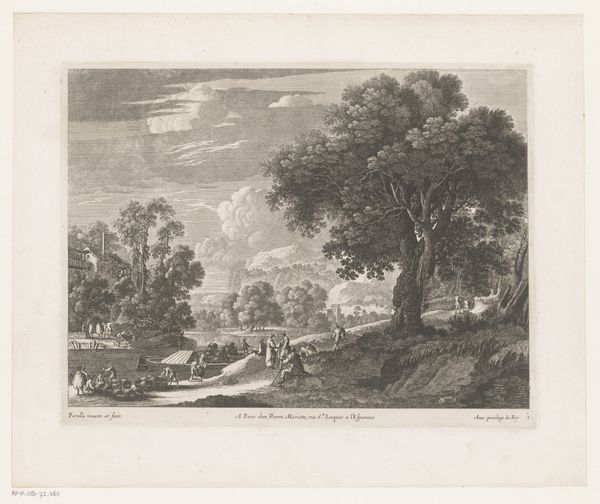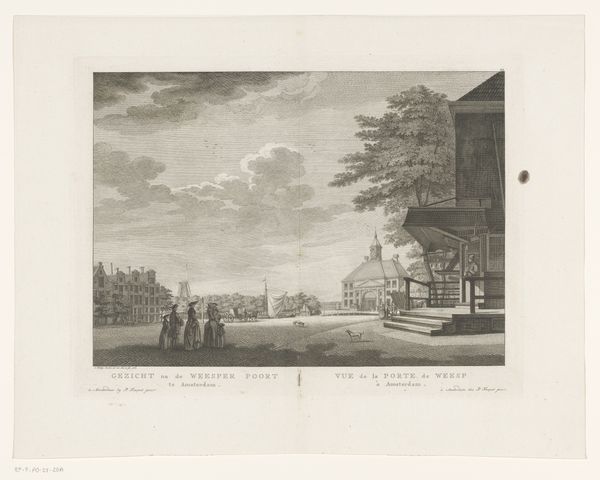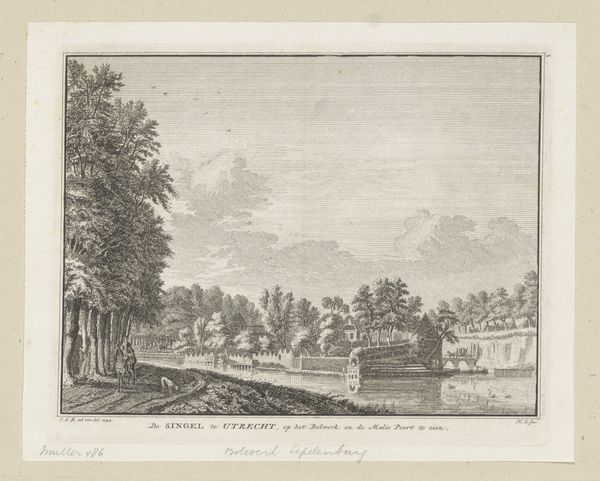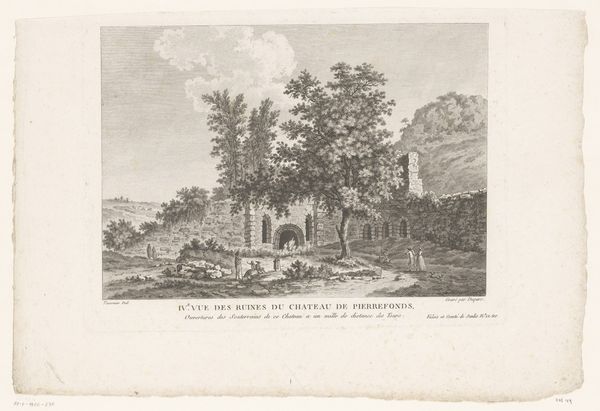
Gezicht op de stadswal en het Begijnebolwerk te Utrecht 1773 - 1792
0:00
0:00
print, engraving
#
neoclacissism
# print
#
landscape
#
cityscape
#
engraving
#
realism
Dimensions: height 168 mm, width 209 mm
Copyright: Rijks Museum: Open Domain
Hendrik Spilman created this print of the city wall and Begijnebolwerk in Utrecht some time during his career in the 18th century. At the time, the Dutch Republic was a major center for trade and culture, but also a society marked by stark class divisions. Here, Spilman depicts a tranquil scene of daily life, yet this peaceful image belies the complex social dynamics at play. The Begijnebolwerk, originally a defensive structure, also housed a Beguinage, a community of religious women who lived independently, often from privileged backgrounds. In Spilman’s depiction, we might ask ourselves: Who has access to this space? Who is allowed to move freely through the city? The leisurely boaters and the figures on horseback suggest a certain level of affluence, while the common laborers remain absent from the frame. The print invites us to reflect on how landscapes are not just passive backdrops, but active participants in shaping social relations. Spilman’s Utrecht is a world of both serenity and subtle exclusion, a reminder that even the most picturesque scenes can carry histories of power and privilege.
Comments
No comments
Be the first to comment and join the conversation on the ultimate creative platform.
